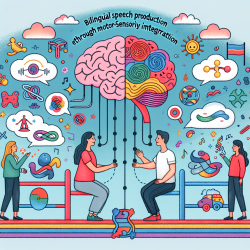Introduction
The rapid shift to virtual mental healthcare (VMHC) due to the COVID-19 pandemic has created both challenges and opportunities for clinicians working with children and youth. The research article "From Pandemic to Progression: An Educational Framework for the Implementation of Virtual Mental Healthcare for Children and Youth as a Response to COVID-19" provides a comprehensive framework to guide practitioners in delivering effective VMHC. This blog explores the key elements of this framework and how it can be utilized to improve outcomes for young patients.
The Six-Pillar Framework
The framework developed by the Hospital for Sick Children (SickKids) in Toronto outlines six critical pillars for delivering VMHC effectively:
- Patient and Caregiver Environment: Emphasizes the need for a private, quiet, and safe space for virtual sessions, ensuring a conducive environment for both assessment and treatment.
- Patient and Caregiver Factors: Highlights the importance of patient willingness and the suitability of virtual visits, considering factors such as privacy, communication limitations, and cultural expectations.
- Provider Environment: Stresses the need for a professional and private setting for clinicians, equipped with adequate technology and internet bandwidth to ensure seamless communication.
- Provider Factors: Encourages clinicians to embrace technology and adapt their therapeutic techniques to the virtual setting, enhancing their competency in delivering VMHC.
- Safety Planning: Underlines the necessity of having a safety protocol in place to address potential patient risks during virtual sessions.
- Legal and Regulatory: Ensures adherence to professional standards and legal regulations, including obtaining informed consent and maintaining patient confidentiality.
Implementing the Framework
For practitioners, implementing this framework requires a commitment to understanding and addressing the unique needs of each patient. This involves:
- Engaging in continuous learning and training to refine skills in virtual care delivery.
- Collaborating with multidisciplinary teams to ensure comprehensive care for young patients.
- Utilizing data-driven approaches to evaluate the effectiveness of VMHC and make informed decisions.
Encouraging Further Research
While the framework provides a solid foundation, ongoing research is essential to address emerging challenges and opportunities in VMHC. Practitioners are encouraged to contribute to this growing body of knowledge by:
- Participating in research studies to evaluate the long-term impact of VMHC on child and youth mental health.
- Exploring innovative technologies and methodologies to enhance virtual care delivery.
- Advocating for policy changes that support equitable access to VMHC for all children and youth.
Conclusion
The transition to virtual mental healthcare presents a unique opportunity to improve access and outcomes for children and youth. By adopting the six-pillar framework and engaging in continuous learning and research, practitioners can play a pivotal role in shaping the future of mental healthcare. To read the original research paper, please follow this link: From Pandemic to Progression: An Educational Framework for the Implementation of Virtual Mental Healthcare for Children and Youth as a Response to COVID-19.










